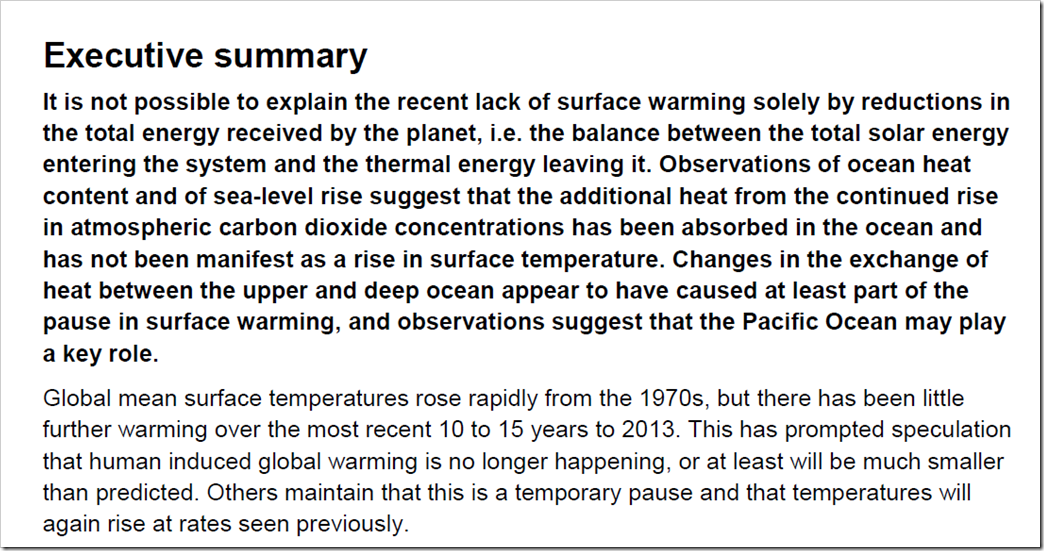by P. Homewood, Apr 14, 2024 in NotaLotOfPeopleKnowThat
Once upon a time there was The Pause.
For a decade and a half, global temperatures stopped rising, an embarrassment for climate scientists. Even the Met Office published a long study in 2013 into the possible reasons.
But while one team at the Met Office were scratching their heads, another was busy at work eliminating the problem.
After all, if the data does not support the theory, you simply change the data.
The Met Office’s Hadley Centre, in conjunction with the disgraced Climate Research Unit at the UEA, had for years published their global temperature series known as HADCRUT3. They regarded it as the gold standard of datasets.
But just a year after the Met Office’s paper on the pause, a new version was rushed out, HADCRUT4, which conveniently removed that pause.
By 2014, when HADCRUT3 was formally replaced, the new version had added about a tenth of a degree to warming since 2000.
…

